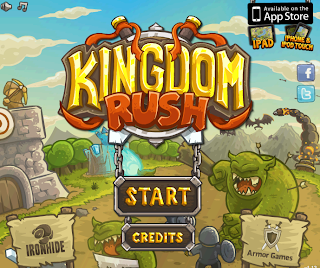 |
Your final project is where you will use what you have learned throughout the class to create a final unit where you will be identifying an outcome and then create a learning environment using audio, video and emerging instructional technologies.
Here are some links to some examples of what has been done in the past in Emerging Instructional Technologies. They do not exactly fit the current requirements, but they will give you the idea.
- Healthy Computing for Windows 7 (commercial)
- Famous Iowans (middle school)
- Different Jobs in Our Community (elementary)
These are similar projects that were done in previous Media Planning and Production courses.
They weren’t created to fit the requirements for this assignment, but
they are good examples of how media is used to create a successful
learning environment.
This RWLD posting will provide some instruction and resource materials that should help support your work.
Selecting Emerging Instructional Technologies
Looking for ideas for Web 2.0 technologies you might use? There are 1000s of Web 2.0 tools in the world. Here are a few lists that may be useful. Don't be overwhelmed by the number of tools listed. Browse the lists until you find something interesting:
Selecting Emerging Instructional Technologies
Looking for ideas for Web 2.0 technologies you might use? There are 1000s of Web 2.0 tools in the world. Here are a few lists that may be useful. Don't be overwhelmed by the number of tools listed. Browse the lists until you find something interesting:
- 77 Web Resources for Teachers to Explore - This is a list of tools sorted by subject area. You will find it in the embedded document half way down the page.
- 100 Best Web 2.0 Classroom Tools Chosen by You - This list is provided by teachers who voted for their favorite tools. These are listed in no particular order but have good descriptions.
- Bloom's and ICT Tools - Web 2.0 tools that are aligned with Bloom's revised taxonomy. Lots of interesting ideas.
Creating Rubrics
A rubric is a tool used to evaluate student work. The rubric presents a list of the criteria that are considered important. Each of these criteria are accompanied by descriptions of different levels of success in demonstrating proficiency in each of the areas.
Here is an introductory video that uses chocolate chip cookies to explain the basics of using a rubric for evaluation.Rubrics serve multiple roles. While people usually consider rubrics as evaluation tools, their most important task is to inform the learner of what is expected. Each cell tells you what is expected for each criteria. Learners can use this tool to evaluate their work before submitting it.
Here is a video that is a bit more technical than the cookie video. It appears to have been created by a college student, but it is complete. The only problem with the presentation is that they place the "unacceptable" column in the left column. It is generally accepted that it is easier for learners to place the "exceptional" column in the left column so that it will be directly next to the criteria name.
You can easily create a rubric using a table in Word or Google Docs, but you can also create a rubric using RubiStar (rubistar.4teachers.org) The advantage to using RubiStar is that there are many samples of rubrics that you can modify to fit your needs.
Writing Performance Objectives
The key to writing performance objectives is that you need to write a statement that describes an outcome behavior that can be measured. This behavior is evidence that something has been learned. Use observable and measurable verbs to describe the learner's performance.
- Understanding is not measurable.
- Listing is measurable.
The most common form of a performance objective is the ABCD objective. This is one that includes the Audience, Behavior, Condition and Degree. Here is a page that explains the ABCD objectives.
Here are some examples of ABCD objectives:
- Objective 1: Using scale models(C), fourth grade students (A) will arrange the eight planets in order from the sun (B) with 75% accuracy (D).
- Objective 2: In 400 words or less (C), fourth grade students (A) will describe characteristics of a planet (B) with at least 80 percent accuracy of both information and grammar (D).
- Objective 3: On a test (C), fourth grade students (A) will label planets in our solar system as gaseous or rock bodies (B) with no more than one error (D).








